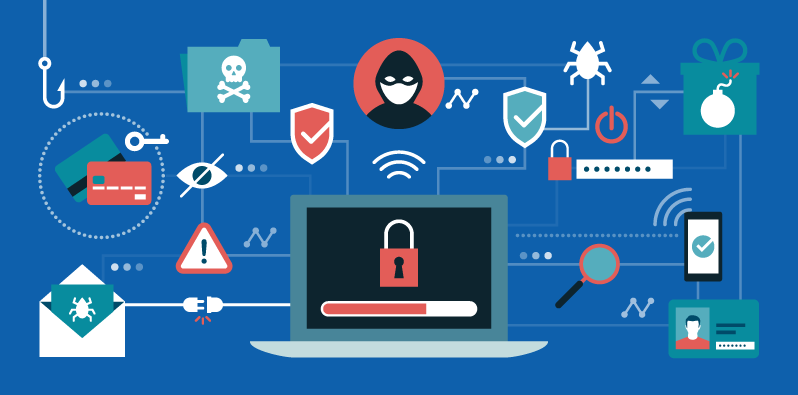Does my Mac have a virus?
Not many years in the past, Mac viruses were a rarity and it was highly unlikely for a Mac user to get their computer infected by malware. However, as time passed and Macs became more popular and with a greater market share than ever before, hackers started to gradually turn their eyes towards them, trying to come up with ways to create malware that could infect and harm macOS systems. Currently, the number of Mac viruses on the Internet is huge, and being a Mac user no longer means that your computer is nearly invulnerable to attacks. And while Mac security is still high in quality, there’s no doubt that this doesn’t stop cybercriminals from finding ways to attack Mac computers.

How to find out if your Mac is infected with a virus.
Because of all that, it is essential for Mac users to learn how to recognize malware attacks on time so that they could then take adequate measures to counteract them. In the next lines, we will go over the different types of symptoms you may notice on your Mac if a malicious program attacks it so that you could more easily spot potential malware threats in your system.
Malware infection symptoms on Mac
Ads, pop-ups, banners, and browser page-redirects
The generation of invasive and aggressive advertising materials on computers and mobile devices is one of the most common signs that there’s potentially unwanted and/or dangerous software hidden somewhere in the system. Mac computers are no exception here so if you notice that your screen has recently started to get bombarded by different types of ads, clickbait banners, and box messages whenever you are connected to the Internet, this most likely means you are dealing with some sort of advertising malware.
Common examples of such malware are the adware apps and the browser hijackers, both of which target the browser and try to flood it with paid advertisements. The browser hijackers are also known for trying to automatically redirect the browser to different sites with the aim to promote them. Some hijackers can also tamper with the settings of your browser and alter its homepage and search engine without needing your approval.
Sudden restarts and system crashes
This symptom could be related to various types of issues and not only to a malware infection. Nevertheless, if your Mac has recently started experiencing sudden restarts and/or crashes, it’s best to check it for malware. Even if no virus gets detected, this symptom shouldn’t be ignored as it may indicate corruption of hard-drives, faulty RAM memory sticks, and other serious issues that may eventually lead to the computer becoming totally unusable.
Malware infection warnings from third-party apps
This symptom could be a bit confusing because the warning you are seeing is actually coming from the unwanted/hazardous program. There is a common subtype of Mac malware that is all about trying to trick users into buying some software they don’t really need. The way this kind of malware works is rather simple: it shows the user a warning notification about a virus that’s operating in the system and then tells the user that they need to pay money to get a non-existent virus removed. A good rule of thumb for Mac users is to never trust any such warnings that are coming from third-party apps unless the application that’s warning you is an antivirus that you have willingly installed on your computer.
Performance problems
Another very common sign that maybe there’s some problem with your system is if your Mac has recently become very sluggish, has started to experience frequent application crashes, or has begun to experience screen freeze. Like other symptom types on this list, any performance issues you may encounter on your Mac could also be caused by other problems and not only by malware. Still, noticing that your Mac is working slower than usual, loading apps takes longer, and there are screen and software freezes could definitely mean that you are dealing with some sort of virus.
Locked files
This is a very specific symptom and if you notice it on your computer, it is pretty much guaranteed that you have been attacked by a Ransomware virus. These threats seek to make their victims’ files unavailable so that the victims would be forced to issue a ransom payment by sending money to the hackers in order to get their files restored.
If you are currently experiencing any of the symptoms mentioned in this article, it is imperative that, for your the sake of your Mac’s safety, you investigate the underlying cause for the symtpom/s and take the necessary actions towards resolving the problem. On our site, you can find helpful information on all the latest known Mac threats as well as instructions on how to fight them.
Leave a Comment X